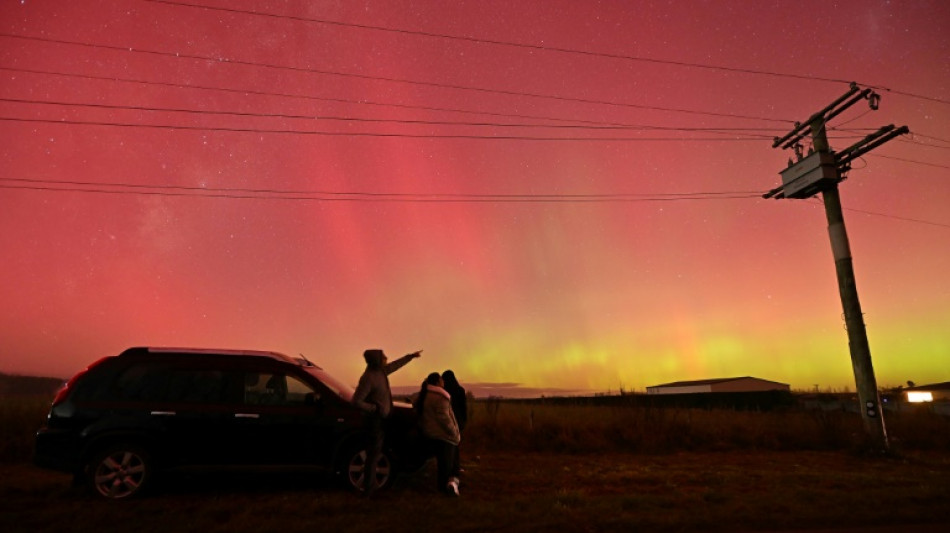
-
 Only 12 trucks delivered food, water in North Gaza Governorate since October: Oxfam
Only 12 trucks delivered food, water in North Gaza Governorate since October: Oxfam
-
Langers edge Tiger and son Charlie in PNC Championship playoff

-
 Explosive batsman Jacobs gets New Zealand call-up for Sri Lanka series
Explosive batsman Jacobs gets New Zealand call-up for Sri Lanka series
-
Holders PSG edge through on penalties in French Cup

-
 Daniels throw five TDs as Commanders down Eagles
Daniels throw five TDs as Commanders down Eagles
-
Atalanta fight back to take top spot in Serie A, Roma hit five

-
 Mancini admits regrets over leaving Italy for Saudi Arabia
Mancini admits regrets over leaving Italy for Saudi Arabia
-
Run machine Ayub shines as Pakistan sweep South Africa

-
 Slovak PM Fico on surprise visit to Kremlin
Slovak PM Fico on surprise visit to Kremlin
-
'Incredible' Liverpool must stay focused: Slot

-
 Maresca 'absolutely happy' as title-chasing Chelsea drop points in Everton draw
Maresca 'absolutely happy' as title-chasing Chelsea drop points in Everton draw
-
Salah happy wherever career ends after inspiring Liverpool rout

-
 Three and easy as Dortmund move into Bundesliga top six
Three and easy as Dortmund move into Bundesliga top six
-
Liverpool hit Spurs for six, Man Utd embarrassed by Bournemouth

-
 Netanyahu vows to act with 'force, determination' against Yemen's Huthis
Netanyahu vows to act with 'force, determination' against Yemen's Huthis
-
Ali hat-trick helps champions Ahly crush Belouizdad

-
 Salah stars as rampant Liverpool hit Spurs for six
Salah stars as rampant Liverpool hit Spurs for six
-
Syria's new leader says all weapons to come under 'state control'

-
 'Sonic 3' zips to top of N.America box office
'Sonic 3' zips to top of N.America box office
-
Rome's Trevi Fountain reopens to limited crowds

-
 Mbappe strikes as Real Madrid down Sevilla
Mbappe strikes as Real Madrid down Sevilla
-
Pope again condemns 'cruelty' of Israeli strikes on Gaza

-
 Lonely this Christmas: Vendee skippers in low-key celebrations on high seas
Lonely this Christmas: Vendee skippers in low-key celebrations on high seas
-
Troubled Man Utd humiliated by Bournemouth

-
 2 US pilots shot down over Red Sea in 'friendly fire' incident: military
2 US pilots shot down over Red Sea in 'friendly fire' incident: military
-
Man Utd embarrassed by Bournemouth, Chelsea held at Everton

-
 France awaits fourth government of the year
France awaits fourth government of the year
-
Death toll in Brazil bus crash rises to 41

-
 Odermatt stays hot to break Swiss World Cup wins record
Odermatt stays hot to break Swiss World Cup wins record
-
Neville says Rashford's career at Man Utd nearing 'inevitable ending'

-
 Syria's new leader vows not to negatively interfere in Lebanon
Syria's new leader vows not to negatively interfere in Lebanon
-
Germany pledges security inquest after Christmas market attack

-
 Putin vows 'destruction' on Ukraine after Kazan drone attack
Putin vows 'destruction' on Ukraine after Kazan drone attack
-
Understated Usyk seeks recognition among boxing legends

-
 France awaits appointment of new government
France awaits appointment of new government
-
Cyclone Chido death toll rises to 94 in Mozambique

-
 Stokes out of England's Champions Trophy squad
Stokes out of England's Champions Trophy squad
-
Gaza rescuers say Israeli strikes kill 28

-
 Sweet smell of success for niche perfumes
Sweet smell of success for niche perfumes
-
'Finally, we made it!': Ho Chi Minh City celebrates first metro

-
 Angry questions in Germany after Christmas market attack
Angry questions in Germany after Christmas market attack
-
China's Zheng pulls out of season-opening United Cup

-
 Minorities fear targeted attacks in post-revolution Bangladesh
Minorities fear targeted attacks in post-revolution Bangladesh
-
Tatum's 43-point triple-double propels Celtics over Bulls

-
 Tunisia women herb harvesters struggle with drought and heat
Tunisia women herb harvesters struggle with drought and heat
-
Trump threatens to take back control of Panama Canal

-
 India's architecture fans guard Mumbai's Art Deco past
India's architecture fans guard Mumbai's Art Deco past
-
Secretive game developer codes hit 'Balatro' in Canadian prairie province

-
 Large earthquake hits battered Vanuatu
Large earthquake hits battered Vanuatu
-
Beaten Fury says Usyk got 'Christmas gift' from judges


Solar storms could cause more auroras
Massive explosions on the Sun have triggered warnings of geomagnetic storms that could create dazzling auroras in the northern United States, Europe and southern Australia from Tuesday night.
In May, the most powerful geomagnetic storm to strike Earth in more than two decades lit up night skies with colourful displays in Hawaii, Spain, South Africa and other places far from the extreme latitudes where they are normally seen.
"We've seen several large coronal mass ejections -- plasma and other material from the sun's surface shooting out into space," Mike Bettwy, operations chief of the US-based Space Weather Prediction Center (SWPC), told AFP on Tuesday.
"As a result, the potential for space weather has ramped up significantly," he said.
The coronal mass ejections (CMEs) are expected to arrive from Tuesday to Thursday, with "geomagnetic storm watches" declared on those days.
But "the brunt of the activity is most likely" to come on Tuesday, when there is a "strong" geomagnetic storm warning of G3 on the US National Oceanic and Atmospheric Administration scale, the SWPC said.
May's record storms were classified as the most extreme level of G5. This means any potential auroras this week are unlikely to stray as far, or be as powerful, as those seen earlier this year.
But if the current forecast is correct, during the late evening hours in the United States on Tuesday, an "aurora could become visible as far south as the northeast US through the upper Midwest and across the rest of the northern states to include northern Oregon."
The aurora borealis -- also known as the northern lights -- may become visible in Scotland over the next three nights, but could be "impeded by limited hours of darkness", the UK's Met Office said Tuesday.
"With a bit of luck," auroras could also be spotted in northern Germany, the Netherlands and Belgium, according to the website SpaceWeatherLive.
Aurora australis -- the southern lights -- could be visible in the south of the Australian state of Tasmania and similar latitudes, the Met Office said.
- 'Cannibal CME' -
For those living in the right latitudes, auroras would be most visible away from city lights, in the darkest skies possible, before the Moon rises, Bettwy said.
People should use their cameras or phones to look, because today's digital imagery can often pick them up even when the naked eye cannot, he added.
When CMEs erupt, they shoot around a billion tons of plasma -- with an accompanying magnetic field -- from the Sun toward the Earth.
One of the CMEs coming towards Earth this week merged with another, forming what is called a "Cannibal CME", according to spaceweather.com.
The NOAA warned that more CMEs are continuing to erupt, so more could be coming.
When the CMEs slam into Earth's magnetosphere, they can create geomagnetic storms.
The storms can mess with satellites orbiting Earth and affect things like radio signals and GPS positioning systems.
They can also knock out electricity grids -- the "Halloween Storms" of October 2003 sparked blackouts in Sweden and damaged power infrastructure in South Africa.
Astronauts on the International Space Station often shelter during extreme solar activity to avoid being exposed to radiation.
Numerous strong solar flares -- huge explosions on the Sun's surface which can cause CMEs -- have also been emitted in recent days.
Most CMEs and flares come from sunspots, which are massive, darker areas of intense activity on the solar surface. The sunspot cluster that caused May's storms was 17 times the size of Earth.
As of Tuesday, there are 11 sunspots on the disc of the Sun, according to the Met Office in Britain.
More geomagnetic storms could be yet to come, because solar activity is only just approaching the peak of its roughly 11-year cycle.
The peak, called "solar maximum", is expected between late 2024 and early 2026.
H.Portela--PC




